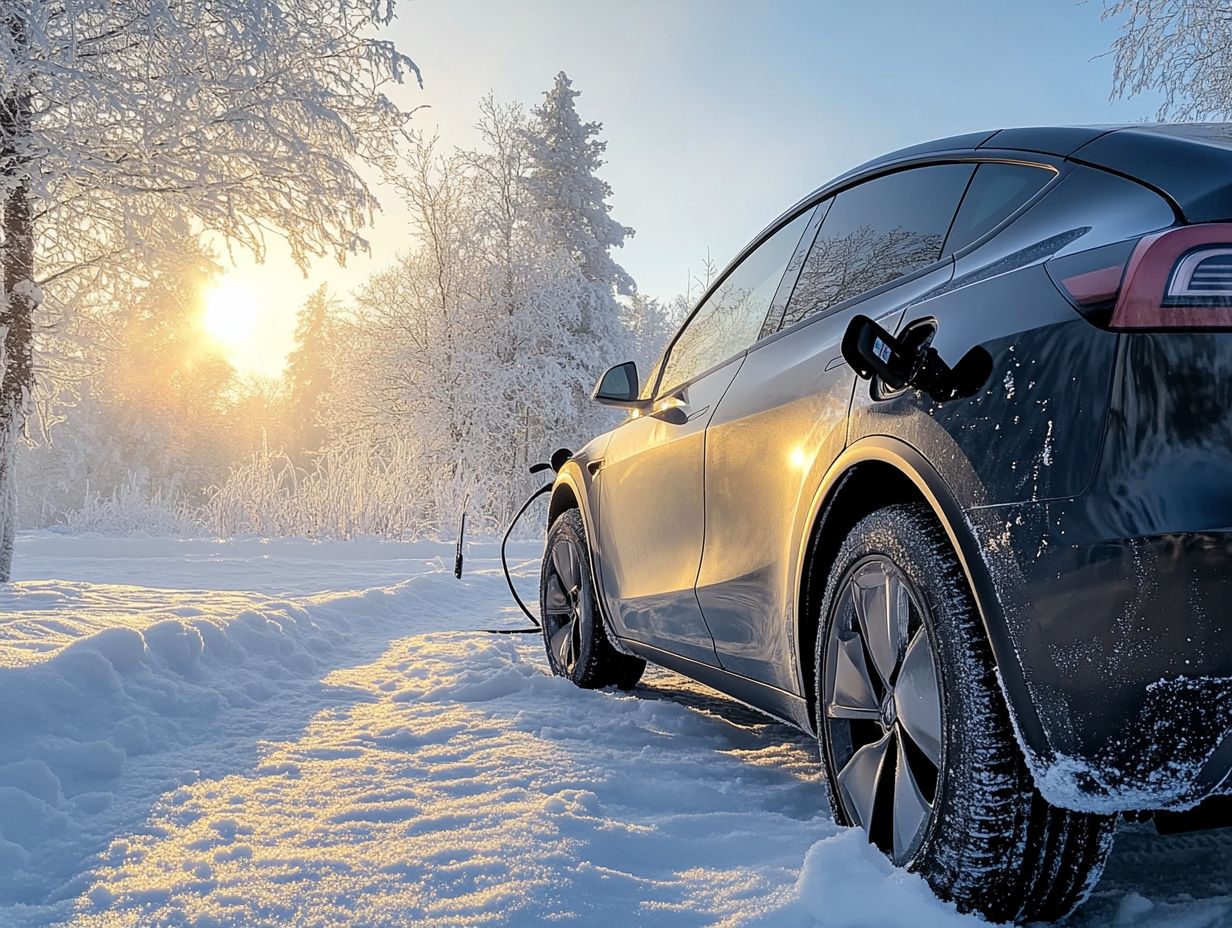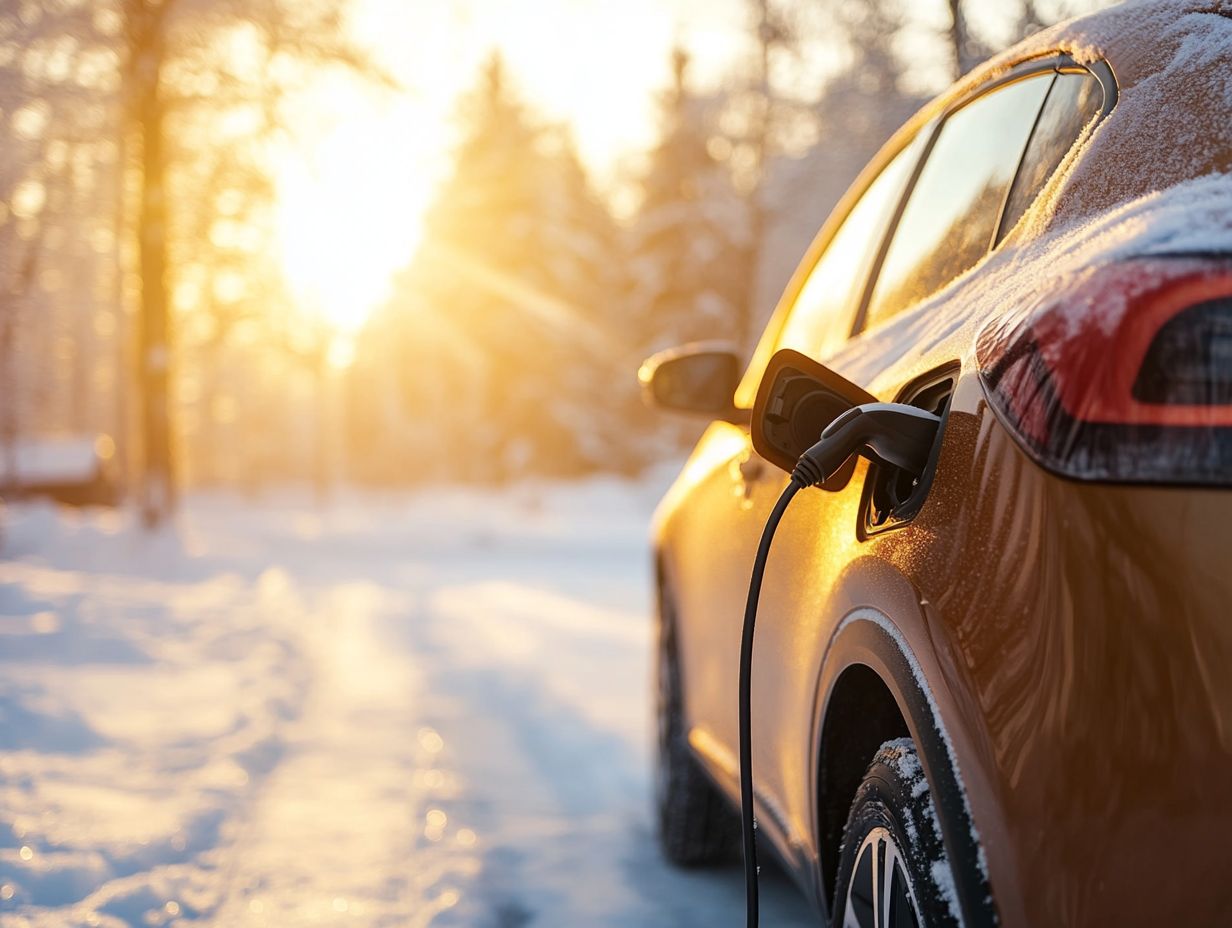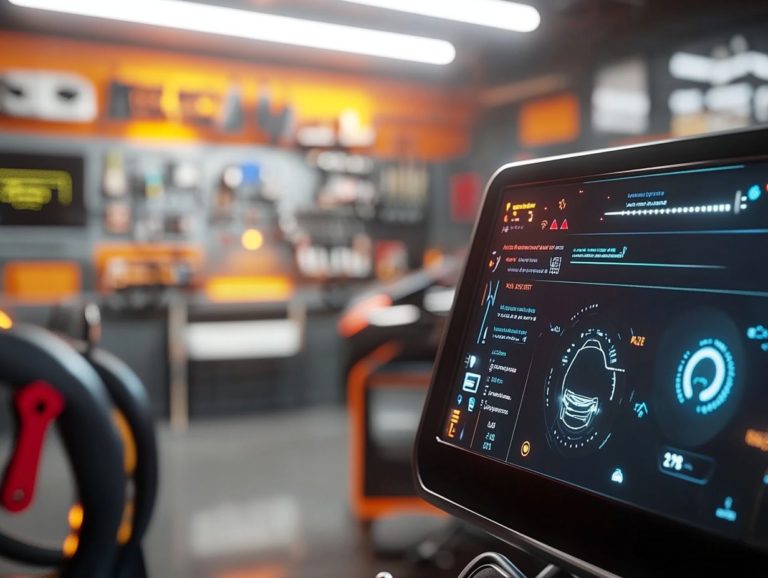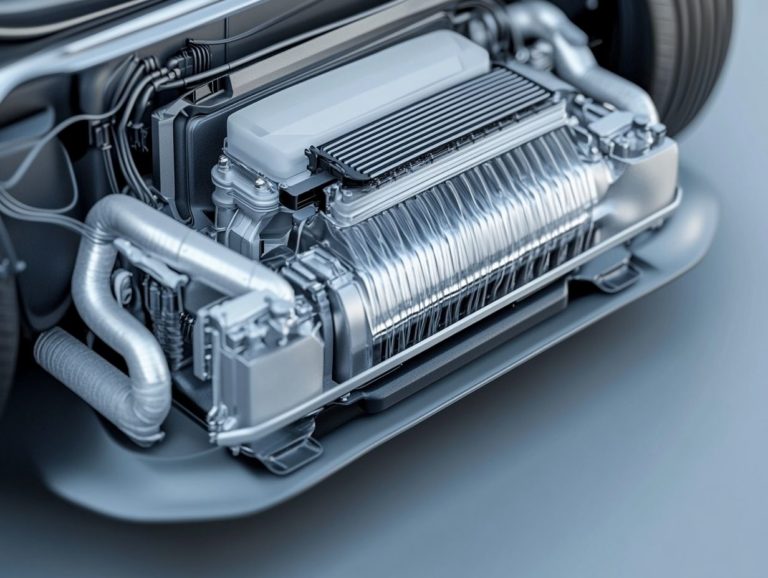How to Care for Your EV in Extreme Weather
Extreme weather can challenge electric vehicles (EVs). It affects performance and charging efficiency.
Understanding how factors like temperature and precipitation impact your EV is vital for ensuring optimal operation.
Get ready for practical tips that will keep your EV running smoothly in any weather!
Contents
- Key Takeaways:
- Understanding Your EV’s Vulnerability to Extreme Weather
- Preparing Your EV for Extreme Weather
- Driving Your EV in Extreme Weather
- Charging Your EV in Extreme Weather
- Storing Your EV in Extreme Weather
- Frequently Asked Questions
- What is considered extreme weather for an EV?
- How often should I check my EV’s tire pressure during extreme weather?
- How can I keep my EV cool in extreme heat?
- What should I do if I get stuck in a snowstorm with my EV?
- Can I use a gas-powered generator to charge my EV during a power outage in extreme weather?
- How can I prepare my EV for a hurricane or severe thunderstorm?
Key Takeaways:

- Regular maintenance and precautions are essential in preparing your EV for extreme weather conditions.
- Safe and efficient driving techniques, along with proper charging practices, can help extend the longevity of your EV during extreme weather.
- When storing your EV during long periods of extreme weather, it’s important to take extra precautions to protect it from potential damage.
Understanding Your EV’s Vulnerability to Extreme Weather
Understanding the impact of extreme weather on your electric vehicle (EV) is essential for maintaining optimal battery performance and ensuring longevity. Intense summer heat and harsh winter conditions can significantly affect both your EV’s range and battery life, potentially leading to degradation over time.
Consider how your driving habits and energy consumption interact with these weather extremes, particularly when utilizing the type of battery commonly used in electric cars, found in models like the Ford and Volkswagen ID.4. Staying well-informed enables you to adopt effective strategies that mitigate these vulnerabilities and enhance your EV experience.
Factors that Affect EV Performance in Extreme Weather
Several key factors will influence the performance of your electric vehicle (EV) during extreme weather conditions, including battery range, energy consumption, and your driving habits. Extreme temperatures can lead to battery degradation and reduced efficiency, making it essential for you to understand how to optimize your vehicle s performance in both summer and winter months.
In hotter climates, the battery’s lifespan may be compromised due to increased heat, which accelerates degradation. Conversely, in frigid temperatures, the chemical processes within the battery slow down, resulting in diminished range and efficiency.
Regularly checking and maintaining optimal tire pressure is vital, as under-inflated tires can further decrease energy efficiency. Using air conditioning wisely helps manage energy consumption; pre-conditioning the cabin while still plugged in allows for a pleasant driving experience without straining the battery.
Preparing Your EV for Extreme Weather
Preparing your electric vehicle (EV) for extreme weather conditions is vital for optimal battery performance and longevity, especially when facing the rigors of summer heat or winter chill.
Engaging in strategic vehicle maintenance like checking tire pressure and ensuring your air conditioning system is running smoothly enhances energy consumption and overall driving efficiency.
Smart charging solutions and preconditioning your vehicle maximize your EV range, no matter the external climate challenges you encounter.
Start preparing your EV today for a smooth ride, no matter the weather!
Essential Maintenance and Precautions

Essential maintenance and precautions for your electric vehicle (EV) involve regular checks on tire pressure and battery life. Both are crucial for optimal performance in any weather condition. Additionally, knowing how to handle EV maintenance emergencies can significantly impact your energy consumption and, consequently, your EV’s range during extreme temperatures.
To enhance longevity and efficiency, conduct routine inspections that cover the battery’s state of charge and overall health. A well-maintained battery can greatly extend both performance and lifespan.
Tire pressure is another key factor. Keeping it at the correct levels improves traction and increases range while maximizing the efficiency of the electric drivetrain.
Knowing where charging stations are located is vital, especially in harsh climates where battery performance can fluctuate. Regularly adjust tire pressure according to temperature changes to ensure a smooth drive, preventing unnecessary strain on both the battery and motor.
Collectively, these practices are not just about ensuring your vehicle functions well; they are also essential for your safety and satisfaction as a proud EV owner.
Driving Your EV in Extreme Weather
Driving your electric vehicle (EV) efficiently and safely in extreme weather requires a clear understanding of how to maintain your EV’s climate control and how environmental factors influence battery performance and energy consumption.
By embracing effective driving habits, using regenerative braking a system that helps recover energy while slowing down and managing air conditioning judiciously, you can maximize your vehicle’s range and mitigate the toll that harsh conditions take on battery life.
Whether you re navigating the sweltering summer heat or braving the biting winter cold, these strategies are essential.
Tips for Safe and Efficient Driving
Follow these simple guidelines to keep your battery performing at its best while driving your electric vehicle (EV) in extreme weather. For specific tips, consider maintaining your EV’s performance in summer and prioritize battery performance and energy consumption.
Manage your air conditioning effectively to improve your vehicle s range while minimizing the risk of battery degradation. Utilizing climate control strategically like pre-conditioning the cabin while still plugged in allows you to minimize battery drain during your journeys.
Maintaining a consistent speed is equally important; sudden accelerations and decelerations can drastically affect your energy usage. When used correctly, regenerative braking helps slow down your vehicle and efficiently recaptures energy, especially in stop-and-go traffic.
Ignoring these strategies can lead to unnecessary battery drain. It s essential to adapt your driving techniques to different weather conditions to prevent unexpected reductions in range.
Charging Your EV in Extreme Weather
Charging your electric vehicle (EV) in extreme weather conditions presents distinct challenges. For effective management, consider the seasonal care for electric vehicles to maintain optimal charge levels and battery range, which is crucial.
By using smart charging solutions and knowing how to locate suitable charging stations, you can counteract the adverse effects of harsh temperatures. This ensures your vehicle is always prepared for your next journey.
Best Practices for Charging in Different Conditions

Implementing best practices for charging your electric vehicle (EV) in extreme temperatures is essential for preserving battery performance and ensuring efficient energy consumption.
Understanding how different weather conditions impact charging times and strategies can significantly enhance your experience with charging stations and smart charging solutions.
In extreme heat, consider parking in shaded areas or using reflective covers to prevent your battery from overheating. High temperatures can slow down the charging process. Conversely, during colder months, aim to charge when temperatures are mildly cool, as frigid conditions can impede optimal charging speeds.
Opting for Level 2 charging stations instead of standard outlets typically results in faster battery replenishment. Additionally, manage your charging schedule to align with more temperate times of day like early morning or late evening to improve charging efficiency and extend the life of your battery.
Storing Your EV in Extreme Weather
Storing your electric vehicle (EV) in extreme weather can dramatically affect its battery life and overall performance. To protect your investment, it’s crucial to adopt the right storage practices, including how to care for your EV’s interior.
By understanding how to maintain the charge level and carry out necessary vehicle maintenance, you can protect your EV from the harmful effects of both heat and cold. This is especially important when dealing with lithium-ion batteries, which are commonly used in EVs.
How to Protect Your EV During Long Periods of Inactivity
To keep your electric vehicle safe during long periods of inactivity, especially in extreme temperatures, it s essential to maintain an optimal charge level. Engaging in regular vehicle maintenance is equally important.
Using proper storage techniques will help extend battery life and prevent wear and tear. This ensures your EV is ready for action when you return.
Start by keeping the battery charge between 20% and 80% before leaving your vehicle idle. This range helps reduce stress on the battery cells.
Consider using a charger with a timer to maintain this charge, especially in colder climates where battery performance can drop quickly.
Regularly check tire pressure and fluid levels, as these can fluctuate even when parked. If you expect to leave your EV unattended for a long time, a battery management system can alert you to low charge or maintenance needs.
These smart tips will help your vehicle thrive in harsh weather, ensuring it operates optimally when you re ready to take the wheel.
Frequently Asked Questions
What is considered extreme weather for an EV?

Extreme weather for an EV includes high heat, below-freezing temperatures, heavy rain or snow, and strong winds. These conditions can significantly impact the performance and longevity of your EV.
How often should I check my EV’s tire pressure during extreme weather?
It is recommended to check your EV’s tire pressure once a week during extreme weather. Changes in temperature can affect tire pressure, and proper inflation is crucial for safe and efficient driving.
How can I keep my EV cool in extreme heat?
In extreme heat, park your EV in a shaded area or garage to prevent the battery from overheating. You can also use a battery cooling system or cover to shield the battery from direct sunlight.
What should I do if I get stuck in a snowstorm with my EV?
If you find yourself stuck in a snowstorm with your EV, stay in the car and keep the heater on to conserve battery life. Use the car’s energy to charge your phone and call for assistance. It’s also important to have an emergency kit with warm clothes and blankets in your car for extreme weather situations.
Can I use a gas-powered generator to charge my EV during a power outage in extreme weather?
No, it is unsafe to use a gas-powered generator to charge your EV. EVs use high-voltage systems that are not compatible with generators, which could cause damage to the vehicle. Instead, consider investing in a backup battery or portable charger specifically designed for EVs.
How can I prepare my EV for a hurricane or severe thunderstorm?
Before a hurricane or severe thunderstorm, fully charge your EV’s battery and have a backup plan for charging in case of power outages. Bring your charging cable and adapter if you need to evacuate. Secure any loose items around your EV to prevent damage from strong winds.





